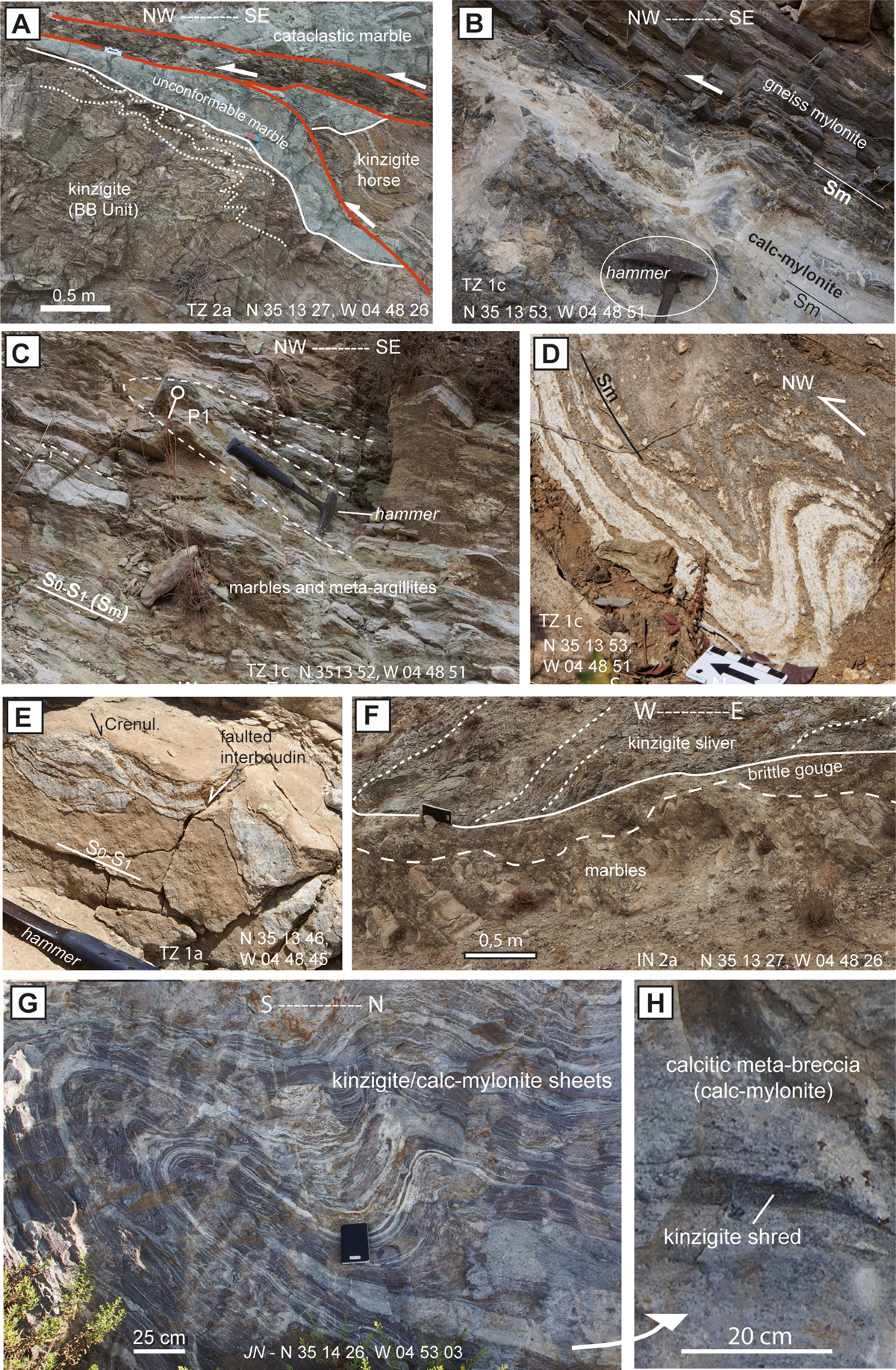Fig. 7

Download original image
Structure of marble lenses (see location in Fig. 5, except for G and H, located in Fig. 4). Sm: main foliation, which corresponds to bedding S0 transposed in the mylonitic foliation S1. A: Lower boundary of marble lens 2a. B: Upper boundary of marble lens 1c. C: Early isoclinal folds in the lower part of the 1c lens. Compare with the late folds exposed in a neighboring outcrop (Fig. 6B). D: Northwest verging asymmetric fold in the mylonitic zone on top of the marble lens 1c; the fold deforms boudinaged silica-rich beds (white) interleaved in the carbonate matrix. E: Boudinage and flattening of a silica-rich bed in the marble lens 1b. Notice the late crenulation and minor fault structures. F: Late normal-sinistral fault crosscutting the marble lens 2a and the overlying kinzigite horse. The fault dips ∼40° to the N. G: Ductile, multiple folding and brecciation of the JN marbles about 50 meters to the north of outcrop (Fig. 6E). The dark sheets and shreds are composed of kinzigite-like material, the white sheets and the breccia matrix correspond to calc-mylonite. H: Detail of the calc-mylonitic meta-breccia in the core of the major isoclinal fold shown in (G), a few meters to the north.
Current usage metrics show cumulative count of Article Views (full-text article views including HTML views, PDF and ePub downloads, according to the available data) and Abstracts Views on Vision4Press platform.
Data correspond to usage on the plateform after 2015. The current usage metrics is available 48-96 hours after online publication and is updated daily on week days.
Initial download of the metrics may take a while.




